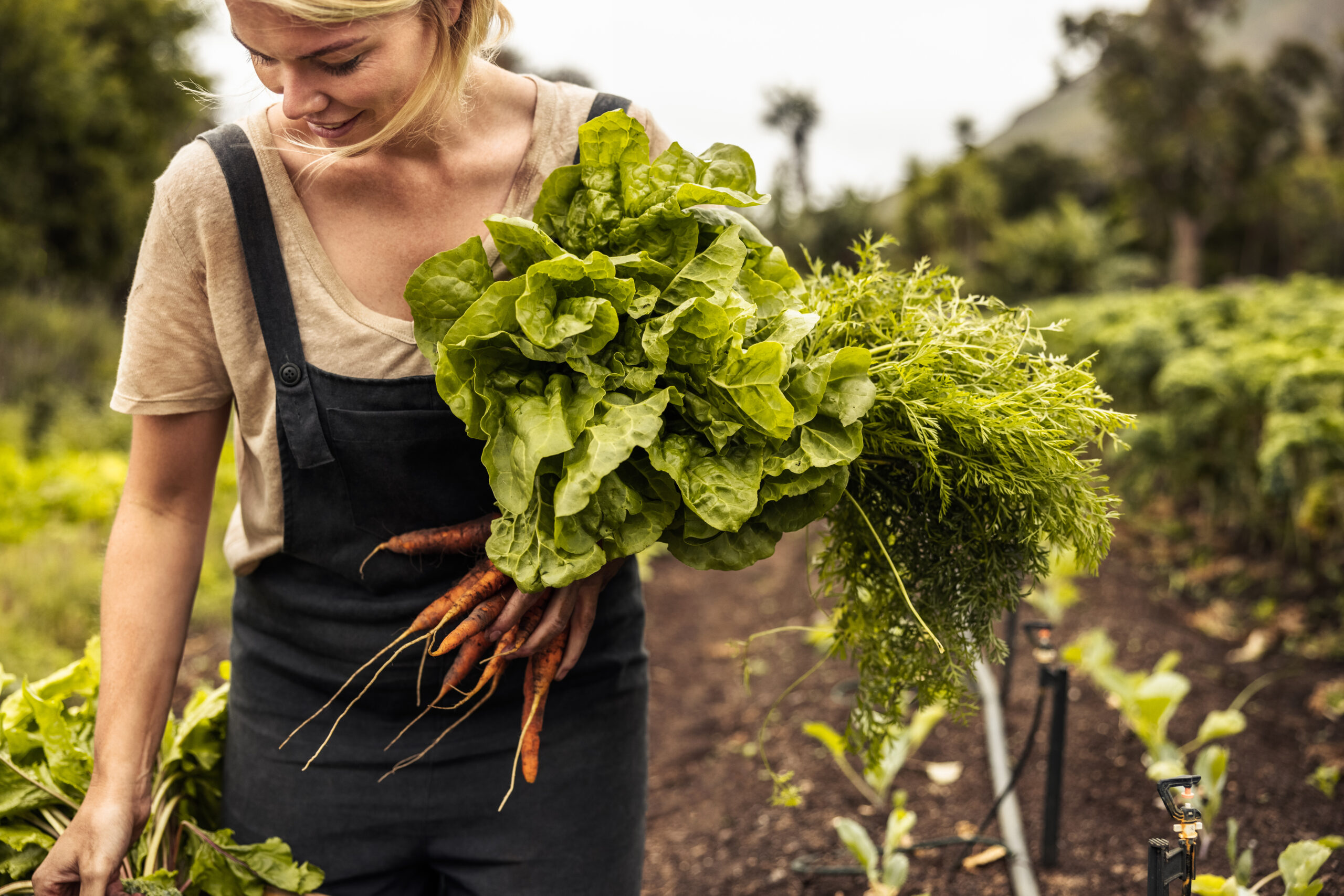Gardening in the north of the UK has its quirks. Cooler temperatures, shorter summers and unpredictable weather can make some crops feel like a gamble. But with the right approach, a northern garden can be just as productive — and in some cases, even more rewarding — than one in warmer parts of the country. Many vegetables actually thrive in cool, damp conditions, and certain fruits develop more decadent flavours when exposed to colder nights.
The key is to work with the climate, not against it. By choosing varieties that are hardy, resilient and ideally suited to shorter growing seasons, you can enjoy harvests that keep your kitchen stocked throughout the year.
Here’s what grows best in the north — and how to make the most of your garden.

Cold-tolerant vegetables
When you live in a region where frost lingers and summers can be unpredictable, you need crops that are tough enough to withstand a chill. Enter the brassica family: kale, sprouts, cabbage and broccoli. Not only do these vegetables shrug off cooler weather, but they often taste sweeter when harvested after a frost, thanks to the natural sugars that develop in the leaves.

Kale is exceptionally forgiving, producing nutritious leaves for months on end. Brussels sprouts and cabbage are perfect for planting in spring and harvesting through winter, offering fresh greens long after tender crops have disappeared. Broccoli, exceptionally hardy varieties like purple sprouting, can provide an early burst of colour and flavour before many other plants are ready.
If you’re unsure where to begin, a good selection of brassica and leafy vegetable plants can take the guesswork out of growing from seed, giving you a strong head start.
Root crops for reliability
For northern gardeners, root vegetables are a staple of the garden. Carrots, beetroot and parsnips thrive in cooler soils and are some of the most reliable crops you can grow. Once planted, they don’t demand much attention, and they store well through the colder months — perfect for hearty stews and roasts.

Beetroot, with its earthy flavour and versatility, is an excellent choice for pickling, roasting or grating into salads. Carrots add sweetness to soups and casseroles, while parsnips are at their best when lifted after a frost, their starch turning into sugars for a sweeter flavour.
Raised beds or deep containers can help improve drainage in wetter soils, preventing roots from becoming misshapen and allowing for healthier growth. For an even easier option, many seed companies now offer early-maturing or bolt-resistant varieties that thrive well in northern conditions.
Fruit that flourishes up north
While Mediterranean favourites like citrus or figs may struggle outdoors, northern gardeners have the advantage when it comes to berries. Raspberries, gooseberries, currants, and blackberries are all well-suited to cooler climates, often producing bumper harvests with relatively little care.

These fruits aren’t just delicious — they’re also a significant investment. Once established, berry bushes and canes can produce fruit for years, making them a reliable feature of your garden. They’re also perfect for smaller spaces, as many varieties grow happily against fences or in pots.
Apples and plums are another excellent choice, particularly traditional, hardy varieties that tolerate frost well. Planting them in sheltered spots helps protect early blossoms from late cold snaps.
If you’re looking to add fruit to your garden, explore the wide range of fruit plants and trees available — from compact patio options to full orchard favourites.
Working with the northern climate
The real secret to successful northern gardening is embracing the conditions rather than fighting them. A few simple strategies can make all the difference:
- Use raised beds to improve drainage and warm the soil more quickly in the spring.
- Try cloches, fleece or polytunnels to protect tender crops and extend the growing season.
- Choose early or late-maturing varieties to suit the shorter northern summer.
- Position crops thoughtfully: sheltered, south-facing spots are ideal for sun-lovers like tomatoes or peppers.
- Plan for storage: many northern-friendly crops, such as potatoes, onions and squash, keep well, helping your harvest stretch into winter.
A final thought
With the right hardy varieties and a little planning, northern gardens can be every bit as productive as those further south. From sweet, frost-kissed cabbages to generous berry harvests, the cooler climate brings its own rewards.
D.T. Brown offers a wide choice of plants and seeds suited to different regions, making it easier than ever for northern gardeners to grow with confidence. With just a few wise decisions, your garden can become a thriving source of fresh vegetables and fruit — proof that sometimes the best things really do grow in cooler climates.

